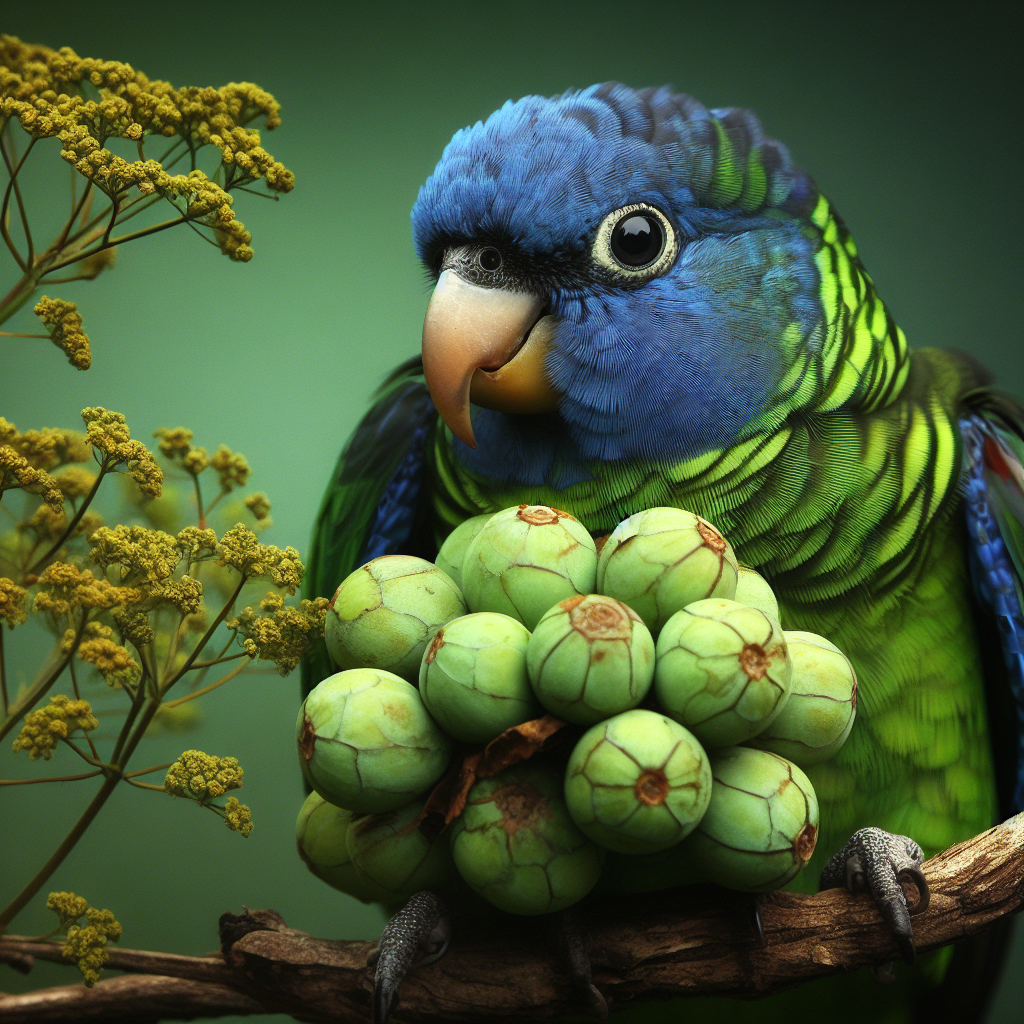Most beautiful small birds - Sykalo Eugen 2024
Blue-headed Parrot (Pionus menstruus)
Identification:
- Species name: Blue-headed Parrot
- Scientific name: Pionus menstruus
- Family: Psittacidae (Parrots)
- Order: Psittaciformes (Parrots)
- Subclass: Neornithes (Modern birds)
- Class: Aves (Birds)
Description:
- Size: A mid-sized charmer, about 27-29 cm (10.6-11.4 in) long with a wingspan of about 42-48 cm (16.5-18.9 in).
- Body shape: Plump and compact, with a short, thick neck, a strong curved beak for crunching fruit and nuts, a short, square tail, and sturdy legs for climbing and hopping.
- Plumage color:
Head: Dazzling blue, like a sapphire set against the emerald.
Body: Vibrant green on the back and wings, fading to a lighter shade on the underparts.
Red undertail coverts add a splash of scarlet.
Black bill and large, dark brown eyes scan the rainforest for tasty treats.
Behavior:
- Method of feeding: Primarily frugivorous, feasting on a variety of fruits, nuts, seeds, and even flowers. They use their strong beak to crack open nuts and pry into juicy fruits.
- Reproduction: Builds cavity nests in trees. Lays 2-4 white eggs. Both parents care for the young.
- Movement: Resident in most of its range, with some local movements in response to food availability.
- Communication: Loud and raucous, with a variety of calls and whistles used for alarm, foraging, and mating. They are known for their mimicry, imitating the sounds of other birds and even monkeys.
Ecology:
- Habitat: Humid tropical forests, forest edges, clearings, and even cultivated areas. Prefers areas with diverse vegetation and plenty of fruit trees.
- Diet: Fruits, nuts, seeds, flowers, and even insects. Plays an important role in seed dispersal and forest regeneration.
- Hunting methods: Forages actively through the rainforest canopy, climbing branches with agility and using their strong beak to extract food. May also glean insects from leaves and bark.
Distribution: Found throughout Central and South America, from Mexico to Argentina. One of the most common and adaptable parrots in the neotropics.

Ah, the Blue-headed Parrot, a feathered jester painting the Amazonian canopy with flashes of turquoise and a cacophony of unexpected sounds. Forget your preconceived notions of squawking squawkers; this resident of emerald jungles and sun-dappled riverbanks holds a treasure trove of surprising facts and adaptations that will transform this playful acrobat into a captivating aerial clown, hidden feast master, and unexpected social strategist in your eyes.
Masters of the Canopy Circus: Forget clumsy hops; Blue-headed Parrots reign supreme in the domain of towering trees and tangled vines. Their powerful wings and surprisingly acrobatic skills propel them through the dense foliage with breathtaking agility, swinging and twisting like feathered trapeze artists on miniature jungle gyms. Imagine them as canopy clowns with built-in miniature ziplines and an innate love for gravity-defying antics.
Hidden Feasting Technique: Don't underestimate their dietary versatility! While fruits and nuts are staples, Blue-headed Parrots are opportunistic omnivores, readily adapting their menu to seasonal bounty. From juicy flowers and tender leaves to grubs and even the occasional small fish, their varied appetite keeps them fueled for energetic foraging sessions. Think of them as feathered jungle gourmands with built-in miniature buffets hidden within the emerald labyrinth.
Talking with Unexpected Twists: Their calls aren't just squawks and screeches. Blue-headed Parrots possess a remarkable ability to mimic sounds, from the calls of other birds and primates to the clanging of tools and even human speech! These feathered comedians, with their built-in miniature soundboards and mischievous spirit, become living jungle DJs, remixing the soundscape with surprising creativity and playful humor.
Unexpected Social Strategists: They're not always solitary acrobats. Blue-headed Parrots live in close-knit family groups or playful flocks, engaging in synchronized aerial antics and complex communication networks. These feathered socialites, through shared foraging strategies and synchronized alarm calls, become living maps of hidden bounty and potential threats, navigating the dense canopy with collective wit and vibrant camaraderie.
Champions of Ecosystem Health: They're not just colorful residents. Blue-headed Parrots play a vital role in the health of tropical ecosystems. Their fruit and seed dispersal contributes to plant reforestation, while their insect feasting controls pest populations, making them feathered jungle doctors with built-in miniature seed-spreading tools and invisible ecosystem balance scales.
Cultural Charmers: Across South America, the Blue-headed Parrot has held diverse cultural significance. In some regions, its vibrant plumage inspires admiration for its beauty and vibrancy. In others, its playful calls are seen as symbols of joy and celebration, reminding us of the hidden magic within the Amazonian canopy.
Unexpected Regional Variations: Did you know? Not all Blue-headed Parrots are the same! Different populations across their vast range show subtle variations in plumage color and call patterns, adding a touch of feathered diversity to this adaptable species.